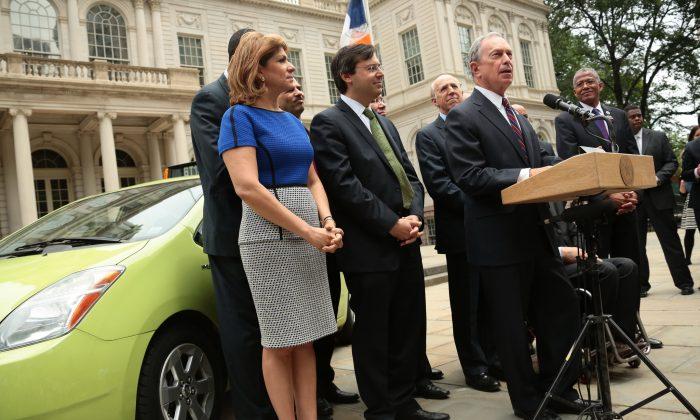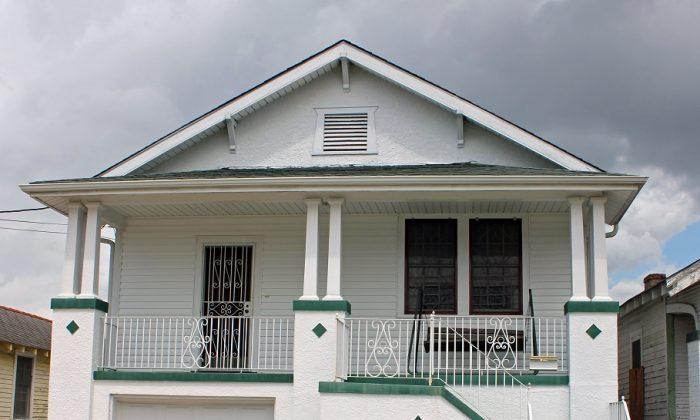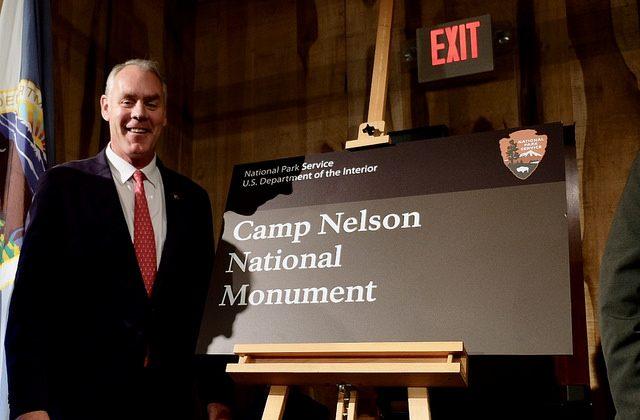NEW YORK—New Yorkers in the outer boroughs looking to hail a taxicab will not have to wait much longer—outer borough taxi service will be here this summer.
The city won an appeal in the New York State Court of Appeals, which upheld state law for the establishing of a street hail livery service in Brooklyn, Queens, the Bronx, Staten Island, and northern Manhattan, as well as for the city’s sale of 2,000 additional medallions for wheelchair-accessible yellow taxicabs.
“For the first time in modern memory, the other four boroughs of NYC will have taxi service,” said Mayor Michael Bloomberg in a press conference. “This is a huge win for riders and drivers alike.”
Three separate lawsuits brought by the yellow taxicab industry, trade associations, and credit unions that lend money to finance medallion purchases, and City Council member Lewis Fidler claimed a 2012 law backed by Bloomberg allowing livery cabs to pick up street hails was unconstitutional because the mayor bypassed the City Council and went straight to Albany. The Court of Appeals in Albany rejected these claims in a 22-page opinion.
“The special interest have lost and the people of NYC have won,” Bloomberg said.
The state law allows the Taxi and Limousine Commission (TLC) to issue 18,000 hail accessible outer borough taxicabs licenses over a three-year period. This year, 6,000 licenses will be available, and 20 percent must be wheelchair accessible. The licenses will cost $1,500 for a three-year license, which roughly equates to the same fee paid today for livery cabs.
Fares and meters for the green outer borough taxis will be the same as the yellow cabs in Manhattan. The green taxis will not be allowed to pick up in Manhattan below 96th Street.
Only current livery car drivers will be eligible for a license. Drivers must paint their cars green, purchase and use a meter, have a light atop their cars, get a GPS system, and accept credit cards.
“Compared to the ability to earn increased revenue from new fares, I think you will find many livery drivers will think it is a good deal,” TLC Chairman David Yassky said.
The licenses will be available on a first-come, first-serve basis, and when the 6,000 are sold, drivers must wait a year for the next allotment.
Ethan Gerber, executive director of the Greater New York Taxi Association, one of the groups that sued the city, said he respects the court of appeals decision.
“We have always [thought] there needs to be greater service in the boroughs,” Gerber said by phone June 6. “We thought the problem with the legislation was it creates a second class of service for the boroughs.”
Gerber says he has concerns with the higher standards for yellow taxis, standards he says will not be put on the green cabs, including age limits for cars, types of vehicles, language requirements, and drug testing.
Gerber believes some of his unaddressed issues are what caused the bill to stall in the Council originally before Bloomberg went straight to Albany.
“It is just issuing permits for the same cars that are already on the streets,” Gerber said. He said he looks forward to working with the mayor, TLC, and City Council on legislation to correct some of the issues.
E-Hail
In a separate ruling, a state court lifted an injunction on June 6 that held up the city’s efforts to launch a pilot e-hail program that would allow New Yorkers to hail cabs with their smartphones.
“Those industries who have tried to use the courts to stop progress have almost never succeeded,” said Bloomberg.
The livery cab industry asked the court to issue a temporary restraining order on the e-hail pilot program, believing the new technology would challenge its entire business model.
In New York City, yellow taxis are restricted to street hails, while livery cabs are restricted to prearranged service. The livery cab industry claimed by using smartphones, New Yorkers would be prearranging service. The city argued they would merely be using a different method to hail a cab.





